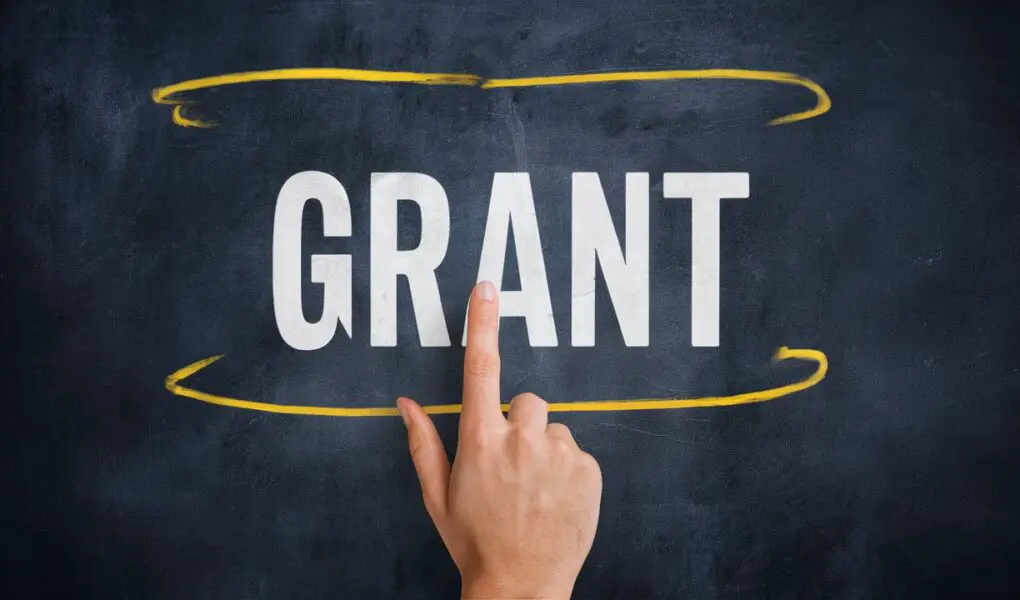Creating a compelling problem statement is one of the most critical steps in designing a successful project. Whether you’re seeking funding, rallying support, or aligning stakeholders, a well-crafted problem statement communicates the urgency of your project and persuades others to join your cause.
This guide will break down the essentials of writing an effective problem statement, with real-world examples, tips, and strategies to help you stand out.
Understanding the Problem Statement
At its core, a problem statement succinctly describes the issue your project aims to address. It serves as the foundation upon which your entire project is built, guiding your objectives, strategies, and solutions. A well-articulated problem statement not only identifies a gap or need but also persuades your audience of the importance and urgency of addressing it.
What Does a Problem Statement Answer?
A comprehensive problem statement typically answers the following questions:
- What is the problem? Clearly defines the issue at hand.
- Why is it significant? Explains the importance and urgency.
- Who is affected? Identifies the stakeholders or population impacted.
- What are the root causes? Delves into the underlying factors contributing to the problem.
By addressing these questions, your problem statement provides a clear and compelling narrative that sets the stage for your project proposal.
Why a Problem Statement Matters
A clear and concise problem statement is pivotal for several reasons:
- Defines Project Focus: It narrows down the scope of your project, ensuring that all efforts are directed toward solving a specific issue.
- Engages Stakeholders: A well-articulated problem resonates with stakeholders, making them more likely to support your initiative.
- Guides Solutions: It helps in identifying appropriate strategies and solutions tailored to the problem.
- Strengthens Funding Proposals: Funders often assess the relevance and urgency of a problem before allocating resources. A strong problem statement can significantly enhance your chances of securing funding.
The Impact on Funding Success
According to research by the Foundation Center,
75% of funders decide within the first page of a proposal whether it aligns with their priorities. This means your problem statement, often positioned prominently in the initial sections, plays a crucial role in capturing funders’ attention and interest.Key Components of an Effective Problem Statement
Crafting a robust problem statement involves several critical components. Here’s a breakdown of what to include:
- The Issue: Clearly describe the specific problem you intend to solve. Be precise and avoid vague language.
- The Scope: Highlight who is affected by the problem and to what extent. This could include demographic information, geographic location, or specific communities.
- The Impact: Explain the consequences of not addressing the problem. What are the short-term and long-term effects?
- The Causes: Identify the underlying factors contributing to the problem. Understanding root causes is essential for developing effective solutions.
- Data and Evidence: Support your claims with relevant statistics, research findings, and credible sources.
- Call to Action: Encourage stakeholders to take action, whether it’s funding your project, providing resources, or offering support.
Example Structure
A well-structured problem statement might follow this format:
- Introduction of the Problem: Start with a hook or compelling fact.
- Detailed Description: Elaborate on the problem, providing context and specifics.
- Evidence and Data: Present supporting data and sources.
- Consequences: Discuss the implications of the problem remaining unresolved.
- Solution Preview: Briefly hint at your proposed solution.
Step-by-Step Guide to Writing a Problem Statement
Creating an effective problem statement can seem daunting, but breaking it down into manageable steps makes the process more straightforward. Here’s a step-by-step guide to help you craft a compelling problem statement for your project.
Step 1: Identify the Problem
Begin by clearly defining the issue your project intends to address. This involves:
- Researching the Issue: Gather information from credible sources to understand the problem’s nature and scope.
- Narrowing Down: Focus on a specific aspect of a broader issue to maintain clarity and relevance.
Example: Instead of tackling “educational disparities,” focus on “lack of access to STEM education for girls in underserved communities.”
Step 2: Analyze the Problem
Delve deeper into the problem by exploring its causes and effects.
- Root Cause Analysis: Use tools like the “5 Whys” or fishbone diagrams to identify underlying factors.
- Impact Assessment: Determine who is affected and how, considering both immediate and long-term consequences.
Example: Limited access to STEM education for girls may stem from factors like insufficient school resources, lack of role models, and cultural biases.
Step 3: Gather Data and Evidence
Support your problem statement with relevant data and evidence to enhance credibility.
- Quantitative Data: Use statistics, percentages, and numerical information.
- Qualitative Data: Incorporate testimonials, case studies, and expert opinions.
Example: “According to the National Center for Education Statistics, over 10 million girls in underserved communities lack access to quality STEM education.”
Step 4: Define the Scope
Specify the boundaries of the problem, including who is affected and where.
- Geographical Scope: Local, regional, national, or international.
- Demographic Scope: Age groups, gender, socioeconomic status, etc.
Example: “This educational gap disproportionately affects low-income and minority girls in urban and rural areas across the United States.”
Step 5: Articulate the Consequences
Explain the implications of not addressing the problem.
- Short-Term Effects: Immediate challenges faced by the affected population.
- Long-Term Effects: Broader societal or economic impacts.
Example: “Without intervention, these disparities will continue to widen, leaving millions of girls unprepared for the demands of the 21st-century workforce.”
Step 6: Craft the Problem Statement
Combine all the elements into a coherent and concise statement.
Example:
“In the United States, over 10 million girls in underserved communities lack access to quality STEM (Science, Technology, Engineering, and Math) education (National Center for Education Statistics). This educational gap disproportionately affects low-income and minority girls, perpetuating cycles of poverty and limiting their future career opportunities.
Research shows that girls who participate in STEM programs are 4 times more likely to pursue STEM careers, yet fewer than 15% of these programs are accessible to girls in low-income areas (STEM Education Coalition, 2023).
Without intervention, the U.S. economy could face a shortfall of 2.1 million STEM workers by 2030, further deepening economic inequalities (U.S. Bureau of Labor Statistics).
Our project, “STEM for Her Future,” aims to bridge this gap by providing free after-school STEM programs to 5,000 girls annually in underserved communities.”
STEM Access for Girls in Underserved Communities
To illustrate how to craft a compelling problem statement, let’s explore a detailed example focused on improving STEM access for girls in underserved communities.
Problem Statement Example
Problem Statement: Enhancing STEM Education Access for Girls in Underserved Communities
In the United States, over 10 million girls in underserved communities lack access to quality STEM (Science, Technology, Engineering, and Math) education (National Center for Education Statistics). This educational gap disproportionately affects low-income and minority girls, perpetuating cycles of poverty and limiting their future career opportunities.
Research shows that girls who participate in STEM programs are 4 times more likely to pursue STEM careers, yet fewer than 15% of these programs are accessible to girls in low-income areas (STEM Education Coalition, 2023). Without intervention, the U.S. economy could face a shortfall of 2.1 million STEM workers by 2030, further deepening economic inequalities (U.S. Bureau of Labor Statistics).
Contributing factors include:
- Limited Resources: Many low-income schools lack the necessary funding for STEM programs, including updated technology and qualified instructors.
- Lack of Role Models: There are insufficient female STEM professionals serving as mentors and role models for young girls.
- Cultural Biases: Societal stereotypes often discourage girls from pursuing interests in STEM fields, leading to decreased participation and confidence.
If this problem is not addressed, the U.S. economy and the global competitive landscape will suffer from a significant shortage of skilled STEM professionals, exacerbating economic disparities and limiting innovation.
Our project, “STEM for Her Future,” aims to bridge this gap by providing free after-school STEM programs to 5,000 girls annually in underserved communities. By enhancing access to quality STEM education, we will empower these girls to pursue higher education and careers in STEM fields, fostering a more equitable and prosperous society.
Breaking Down the Example
- Hook with a Startling Statistic: “Over 10 million girls in underserved communities lack access to quality STEM education.”
- Detailed Description: Explains who is affected (low-income and minority girls) and the broader implications (cycles of poverty, limited career opportunities).
- Supporting Data: Provides statistics on participation rates and future workforce shortfalls.
- Causes Identified: Limited resources, lack of role models, cultural biases.
- Consequences Highlighted: Economic shortfalls and deepened inequalities.
- Solution Preview: Introduces the project “STEM for Her Future” with specific goals.
This structured approach ensures that the problem statement is comprehensive, data-driven, and compelling.
Common Mistakes to Avoid
When crafting your problem statement, it’s essential to steer clear of common pitfalls that can weaken your message. Here are some mistakes to watch out for:
1. Being Too Vague
Avoid: “STEM education is important.”
Why It’s a Mistake: Vague statements lack specificity, making it difficult for stakeholders to understand the exact issue.
Better: “Over 10 million girls in underserved communities lack access to quality STEM education.”
2. Lack of Evidence
Avoid: “Many girls are underrepresented in STEM fields.”
Why It’s a Mistake: Unsubstantiated claims can undermine the credibility of your problem statement.
Better: “Only 15% of STEM programs reach low-income girls, contributing to their underrepresentation in STEM fields (STEM Education Coalition, 2023).”
3. Skipping the Root Cause
Avoid: “Girls don’t pursue STEM.”
Why It’s a Mistake: Without identifying the underlying causes, your problem statement lacks depth and direction for solutions.
Better: “Girls face barriers like limited resources, lack of role models, and cultural biases that discourage them from pursuing STEM subjects.”
4. Ignoring the Human Angle
Avoid: “There is a shortage of STEM professionals.”
Why It’s a Mistake: Failing to humanize the problem can make it seem abstract and less urgent.
Better: “Sarah, a 12-year-old from a rural community, dreams of being an engineer but has never seen a working computer or a female role model in STEM.”
5. Overcomplicating the Statement
Avoid: Using jargon or overly complex language that can confuse readers.
Better: Keep the language clear and accessible, ensuring that anyone can understand the issue regardless of their background.
Advanced Tips for a Standout Problem Statement
Elevate your problem statement by incorporating these advanced strategies that go beyond the basics:
1. Incorporate Storytelling
Humanize the problem by weaving in narratives or anecdotes that illustrate the real-life impact.
Example: “Imagine a young girl named Mia who, despite her passion for robotics, lacks access to a dedicated STEM lab in her school. Without support, Mia’s dreams of becoming an engineer may never materialize.”
2. Use Visual Aids
Graphs, charts, and infographics can effectively convey data and make your problem statement more engaging.
Example: Include a pie chart showing the percentage of girls enrolled in STEM programs across different income levels.
3. Highlight Trends and Projections
Show how the problem is evolving over time and what future projections look like if the issue remains unaddressed.
Example: “The demand for STEM professionals is expected to grow by 15% over the next decade, yet current educational disparities threaten to leave millions unqualified.”
4. Benchmark Against Standards
Compare the current situation to national or international standards to emphasize the gap.
Example: “While the national average for girls in STEM programs is 25%, underserved communities lag significantly behind, with only 10% participation.”
5. Address Potential Counterarguments
Anticipate and address possible objections to your problem statement to strengthen its credibility.
Example: “Some may argue that resources are limited, but investing in STEM education for girls can yield long-term economic benefits, outweighing the initial costs.”
6. Emphasize Urgency with a Timeline
Adding a sense of urgency by specifying a timeline can motivate stakeholders to act promptly.
Example: “With the U.S. facing a projected shortfall of 2.1 million STEM workers by 2030, immediate action is essential to prevent a crippling workforce deficit.”
7. Align with Broader Goals
Connect your problem statement to larger societal or organizational goals to show alignment and relevance.
Example: “Our initiative supports the United Nations’ Sustainable Development Goal 4: Quality Education, by ensuring equitable access to STEM learning opportunities.”
Tools and Resources to Enhance Your Problem Statement
Leveraging the right tools and resources can streamline the process of crafting a compelling problem statement. Here are some valuable assets to consider:
1. Data Sources
Reliable data is the backbone of a strong problem statement. Utilize these sources to gather accurate and up-to-date information:
- Statista: Offers statistics and studies from over 22,500 sources.
- Data.gov: The U.S. government’s open data site, providing access to a wealth of datasets.
- Pew Research Center: Provides insights and data on a wide range of topics.
- National Center for Education Statistics: A primary federal entity for collecting and analyzing data related to education.
2. Templates
Structured templates can guide you through the process, ensuring you include all necessary components.
- Grant Writing Academy Newsletter: Subscribe to access customizable problem statement templates tailored for various types of projects.
3. Checklists
Ensure your problem statement is comprehensive and free of common errors with these checklists:
- Clarity Checklist: Verify that your statement is clear and free of jargon.
- Data Checklist: Ensure all claims are supported by credible data.
- Impact Checklist: Confirm that you have articulated the consequences of the problem.
- Solution Checklist: Make sure you have a clear link to your proposed solution.
4. Software Tools
Leverage technology to enhance your writing process:
- Grammarly: Helps in refining grammar, punctuation, and style.
- Hemingway Editor: Assists in making your writing clear and concise.
- Canva: Create visually appealing infographics and charts to include in your problem statement.
5. Expert Consultations
Seek feedback from professionals or mentors who have experience in grant writing or project management.
- Grant Writing Workshops: Attend sessions offered by organizations like Grant Professionals Association.
- Peer Reviews: Engage with peers to review and provide constructive feedback on your problem statement.
Call to Action: Elevate Your Grant Writing Skills
Are you ready to take your grant writing and project planning skills to the next level?
Subscribe to the Grant Writing Academy Newsletter for exclusive access to:
- Proven Templates: Craft winning problem statements, proposals, and more with our easy-to-use templates.
- Expert Tips: Learn strategies from seasoned grant writers to boost your success rate.
- Comprehensive Guides: Access in-depth resources covering every aspect of grant writing and project management.
- Exclusive Content: Receive workbooks, checklists, and step-by-step guides to streamline your writing process.
- Community Support: Join a network of like-minded individuals striving for excellence in grant writing.
Don’t miss out! Your next grant could be the key to turning your vision into reality. Subscribe Now and unlock the secrets to successful grant writing!
Final Thoughts
A strong problem statement is more than just a description of an issue; it’s a persuasive narrative that lays the groundwork for your entire project. By clearly articulating the problem, supporting it with credible data, and highlighting its significance, you can create a compelling case that resonates with funders, stakeholders, and your target audience.
Remember, the goal is to make your audience understand why the problem matters and how your project is uniquely positioned to address it. Utilize the tips, strategies, and resources outlined in this guide to craft a problem statement that not only defines the issue but also inspires action and support.
Investing time and effort into developing a robust problem statement will pay dividends in the success of your project, enhancing your ability to secure funding, engage stakeholders, and ultimately make a meaningful impact.
Take the next step in your grant writing journey—subscribe to the Grant Writing Academy Newsletter today and empower yourself with the tools and knowledge to achieve your project goals!
Additional Resources and Support
a) Expand Your Knowledge
The grant writing field is always evolving. Keep learning and improving your skills to stay competitive.
Recommended Resources:
- Request for Proposal Success: How to Write Proposals That Win: Learn the techniques and strategies to create standout proposals.
- Tech Startup Funding Secrets: Navigating Grants for Maximum Growth: Perfect for those in the tech sector looking to leverage grants for scaling.
- Grant Proposal Guide for Environmental Projects: Tailored for environmental initiatives seeking to secure impactful funding.
- The Ultimate Guide to Federal Grant Applications: Techniques for Success: Master the complexities of federal grants with actionable insights.
b) Invest in Expert Guidance
Want to fast-track your growth and achieve even more success?
Join one of our mentorship programs for tailored advice and support:
Mentorship Programs:
- 3-Month Mentorship: The Foundation Builder: A short-term plan to refine your grant writing skills and win your first (or next) grant.
- 6-Month Mentorship: The Proposal Pro: Dive deeper into strategies, proposal reviews, and funding plans.
- 1-Year Mentorship: The Funding Champion: Build long-term success with comprehensive guidance, unlimited reviews, and exclusive resources.
c) Book a One-on-One Consultation
Sometimes you just need personalized advice to tackle challenges or fine-tune your strategy. Let’s work together to solve your unique grant writing challenges.
Book a Consultation Call Here






